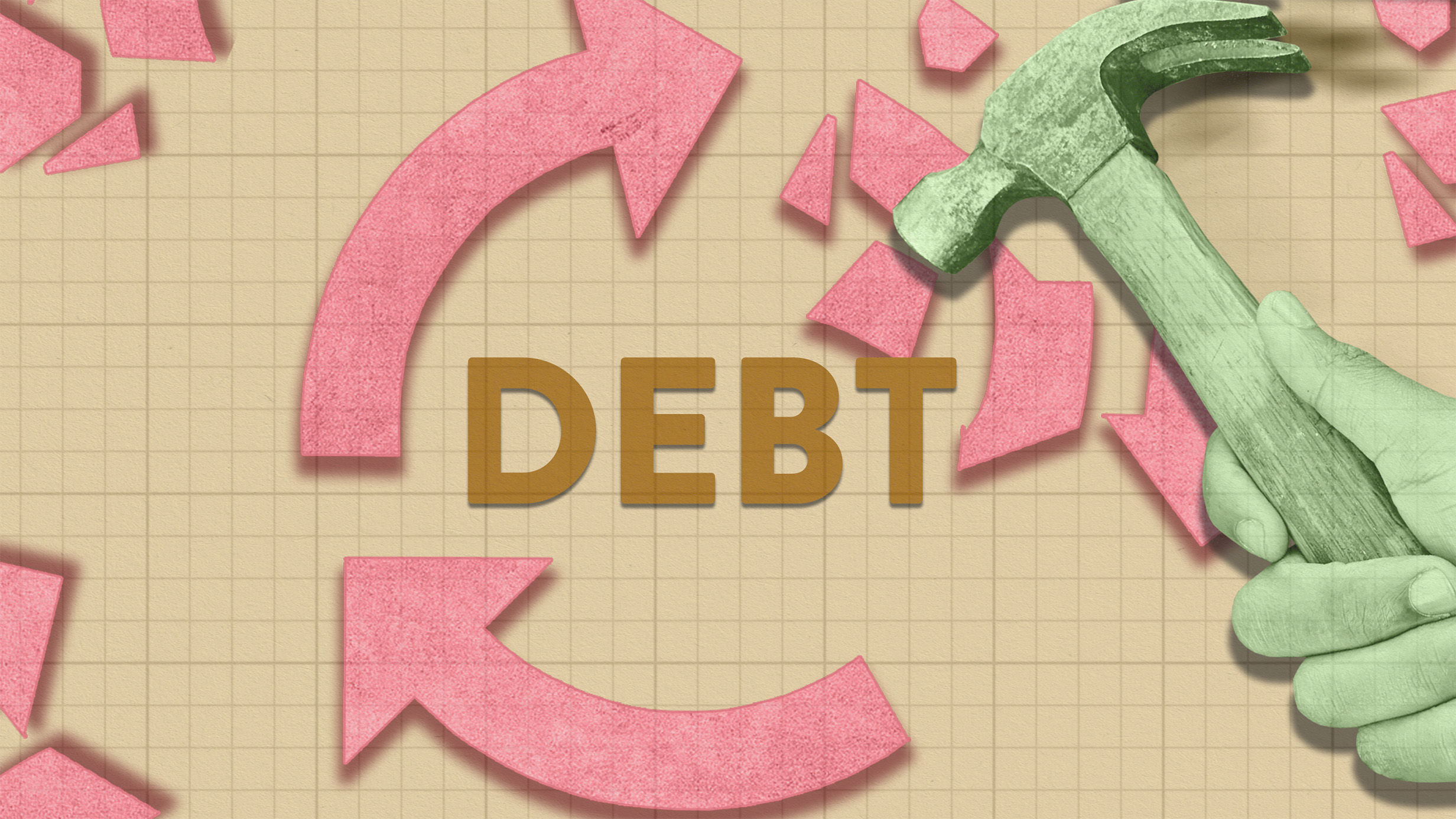Debt: How to break the cycle
A 5 minute read

Dwelling in the doldrums of debt can feel claustrophobic, and sometimes it’s hard to see a way to break the cycle. On one side, taking out positive or “good debts” can be key to a nascent financial future. A mortgage, for instance, or a student loan. But as soon as debts such as credit cards enter the mix, things can get drastic quickly – leading to “bad debts”, such as payday loans. That’s why living with debt can be like living on a knife-edge. And thus, the cycle of debt is born.
A debt cycle is where you keep borrowing to offset existing debts, leading to increased interest costs, poorer credit scores, overall increased debt and eventually… defaulting on your loans.
There’s no shame in it though. This is a judgement-free zone. Debts are sometimes necessary, and it’s easy to fall victim to the high interest. Especially in such a turbulent world where the cost of living crisis still rages on.
When the interest on a debt becomes too much for your monthly budget to handle, you might need to take out a new loan to try to manage the interest, or even to completely wipe out a current debt. But then? Then you’re plunged into even more debt, and suddenly you’re in over your head, and your finances seem to stagnate.
Welcome to the debt doldrums.
Breaking the cycle and dispelling the doldrums
Understanding that you’re in deep with debt and acknowledging that you have too much is the first step to breaking the cycle. That’s because becoming used to debt can box you in and prevent your life from moving forwards – whether it’s having kids, changing jobs, moving house or simply retiring – each milestone will have a potentially insurmountable hurdle to clamber clumsily across.
Perhaps it’s why the phrase “saddled with debt” exists; a horse is saddled by its rider, who controls where it goes and what it does.
So, first things first? Take the reins. Know your money. How much comes in, and how much comes out. Where does it all go, and how?
Spending trackers and budgeting apps can even do the leg work for you, by automatically breaking down your spending into categories so you can see how much of your budget is squandered. Some examples include free-to-use apps such as Emma and Money Dashboard.
Brainy budgeting
So, you know where it’s all going. Now it’s time to make a budget. A budget can help you to see your spending holistically and will help you to learn to live within your means. Some people like to view it as a game: how can you play around with the numbers (such as your outgoings on food, or subscriptions, or travel), to get your spending below your income? And your creativity knows no bounds. Especially when it comes to tightening the purse strings. Can you cycle to work instead of drive? Could you get a cheaper phone contract?
Cut the credit
If you’re actively paying off your credit card debts at the end of the month, and you’ve never been overdrawn, then you’ll know that credit cards aren’t necessarily bad. They can boost your credit score and net you rewards too. But they are also an easy gateway to falling into a debt cycle.
Credit cards have high interest rates, exponentially increasing your overall spending because you’ll end up paying a lot more for things you buy using it.
If you need to stop using them to prevent falling into more and more debt, it might be best to cut the credit. Literally. With a pair of scissors.
The rainy day fund just got a new donor
One reason people accrue debt is because they need to take out a loan to deal with something unexpected: the deadly damage of the pothole down the road, a leaky roof, or unexpected household bills.
Setting up a rainy day fund (a pot of savings touched only for emergencies), and contributing leftover cash to it when you can, could protect you from the need to take out a loan in the future.
If you can get about 3-6 months of living expenses stored away in a protected pot, you’ll be the proud owner of a solid rainy day fund and will feel more secure and empowered in your finances.
So, every so often, stick the money you’d have spent on a takeaway coffee, or lunch at work (packed lunches go a long way) into the pot.
Consolidation station
Sometimes, a loan is a necessary evil. A final debt to dispel all others. That’s where a consolidating debt comes in. If you’re struggling to pay off several high-interest loans, it could make sense to bring all that repayment you’re doing into one single debt. Consolidating your debts means taking out a loan to cover your existing ones. You’ll still have to pay off the new loan of course, and it won’t reduce the amount you owe but it means you’re only paying off one.
If you’re not sure a debt consolidation loan is right for you, make use of the free help available, such as from the National Debtline or Citizens Advice. They can talk you through the pros and cons and may be able to offer you other options.
Debt can trap anyone but knowing how to protect yourself from it and shore up your finances can be a great way to dispelling the debt doldrums and breaking the cycle.
DO NOT EDIT THIS BOX UNLESS YOU'RE NOEL

